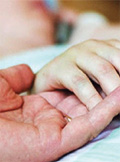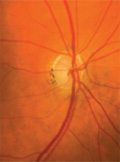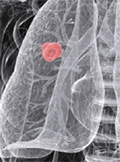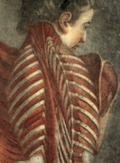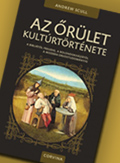The eLitMed.hu medical portal uses computer cookies for convenient operation. Detailed information can be found in the Cookie-policy.
Lege Artis Medicinae - 2018;28(04-05)
Content
[The “room” for death in the family - dying as a role]
[The Hungarian literature has quite ignored so far Noyes & Clancy’s Role Theory approach of dying. I present the outline and a critique of this conception, then lay the foundations of a reformed concept of the dying role. For the optimal and desired dying role is not one of peripherising and objectifying, rather one of placing the dying in the centre of the system of relations and roles radically restructuring under the influence of such role. The personality of the dying remains a true value in this central position. The reintegration of the dying can begin parallel to her disintegration by the progressive loss of her normal social roles (‘the loneliness of the dying’). Death can thus transform into a social phenomenon. I illustrate the argumentation on the central dying role with a case study using the method of a heterophenomenological, second-person character. By promoting the central and autonomous dying role, i.e. by the development of the necessary social role competences, or at least by publicising the thanatological knowledge, death can turn from an avoided, socially disintegrative taboo into a phenomenon that can strengthen the community even after the dying departed.]
[Applying musical tools in healing children]
[The aim of the study is drawing the attention to the possibilities of applying musical tools in healing children. After doing research in main medical databases (PubMed, Web of Science, Medline) some research works were discovered and harmonized in which the researchers give proof of the effectiveness of music therapies implemented in therapeutic circumstances and by proper experts on medical fields. The study focuses on the following topics: applying music for reducing stress caused by medical interventions and hospitalization, treating speech disturbances, improving communication and social abilities of autistic children, improving capabilities of people suffering from visual and hearing impairment, providing help during anaesthesia, stimulating different parts of the brain in children suffering from PDOC (Prolonged Disorder of Consciousness), improving capabilities of children living with disabilities and helping creating harmonic relationship between children, their parents and the healing staff. ]
[Konzerválószer-mentes krónikus kezelés glaucomában: a cseppkezelés okozta szemfelszín-betegség elkerülése]
[Ocular surface disease is a frequently seen condition in the elderly in the general po-pulation. In glaucoma patients the glaucoma-therapy related ocular surface disease is a particularly serious and common condition with complex pathogenenesis. Pre-servatives, most commonly benzalkonium chloride, employed in intraocular pressure lowering eye drops frequently cause or worsen ocular surface disease in glaucoma. The symptoms frequently undermine both the adherence to the prescribed intraocular pressure lowering drops and the vision related quality of life. Therefore the success of long-term glaucoma care in glaucoma-therapy related ocular surface disease is reduced. The current article summarizes the main pathogenetic aspects of glaucoma-therapy related ocular surface disease, and presents how to eliminate the main causative factor and normalize the ocular surface by using completely preservative free topical medication in glaucoma. ]
[Why is it important and ethical to treat anxiety patients?]
[The identification of anxious patiens is not always an easy task. The diagnose is clear in that case, when the symptoms (psychic or somatic) are evident or/and patients complain about anxiety. Anxiety itself is not a pathological symptom if it is adequate in strength and duration. Anxiety reactions have large individual variety -, they are pathological if inadequate and irrelevante and don’t match with the actual situation. According to epidemilogical data one third of patients of family doctors suffer from anxiety but somatic symptoms come to the front, so the patients participate in a great number of medical examinations. It is important to emphasise that medical examinations are necessary to preclude the possibility of any somatic disease. The diagnostic criteria of DSM-5. are an excellent assistance for a good diagnosis. Anxiety is a risk factor for cardiological diseases and diabetes mellitus. The prevalence of anxiety disorders are 12.6-17.2%. Anxiety disorders are well-manageable, they need complex therapy: benzodiazepines, antidepressants, hypnotics and psychotherapy. They frequently co-exist with depression and insomnia so they have to be treated together. ]
[Diagnosis of interstitial lung diseases]
[Recognition and diagnosis of interstitial lung diseases (ILD) is one of the most challenging tasks of respiratory medicine. In the wide range of different ILD-s idiopathic pulmonary fibrosis (IPF) is one of the most common. Improvements in the diagnosis made the recognition of IPF easier. Typical clinical features and usual interstitial pneumonia pattern on high resolution CT are now enough for the confident diagnosis of IPF in the multidisciplinary ILD-team discussions. Bronchoscopic cryobiopsy is a great achievement of histological sampling as this can give appropriate size tissue for histological analysis making surgical intervention rare. As IPF cannot be cured early diagnosis is crucial. Today available treatments can only slow down progression of the disease, so early stages and better clinical condition of the patients are essential for therapeutic success. Follow-up of IPF patients includes complex lung functional measurements in dedicated centers in Hungary. Former studies confirmed forced vital capacity (FVC) decline as an important measure of disease progression and mortality. Available IPF treatments decrease FVC decline and can prevent the mostly deadly acute exacerbations of the disease. Additionally palliative treatments including supplementary oxygen and in selected patients lung transplantation can be offered. This is the first of a series of three articles about IPF. ]
[The psychological preparation of Zala Special Rescue Team for operating during crises]
[The experiences of interventions in disasters and crises of the last decade evidenced that in addition to the professional state forces specially equipped and mentally prepared volunteer and professional rescue groups were necessary operated. The goal of this article is to demonstrate the importance of psychological preparation for helpers and the risks of its hiatus during an intervention. The preparation of Zala Special Rescue Team is presented in our article along with its results. Authors’ review in connection with the rescue team members, their stress pressure, and the possible strategies was based on their long-term experience and relevant literature. ]
[Treatment of EGFR mutant lung adenocarcinoma after progression]
[Precision medicine proposes the personalization of health services in order to make the best individual decisions about the interventions and treatments for the patient. Molecular genetic diagnostic tests help to select the appropriate therapy, so-called targeted therapy. In the case of extensive lung cancer with EGFR mutation, EGFR tyrosine kinase inhibitors are immediately applicable; they are very effective and can reach long-term remission of the disease. However, resistance mutation can develop during the treatment, which causes the progression of the disease; therefore change of therapy is needed. In our case, we show the possibility of targeted treatment beyond the progression, emphasizing the importance of detecting resistance mutation. ]
[Oncophilosophy]
[Combining oncology with philosophy, as seemingly two different disciplines, is an exciting task but the question arises as to why this is necessary. For thousands of years philosophers have been trying to find answers to the basic questions of being-existence, reality, death, morality but from the twentieth century we see less and less the daily significance of these. Are not “questions of existence” important or are they no longer relevant? We would like to believe they are not but there are situations where suddenly our existence is threatened and all our already gained life experiences are proved to be a failure…]
[“Vires unitae agunt” - way of the unification: medical professionalization in 18-19. centuries Hungary]
[European and Hungarian medicine and its representatives changed a lot between the sixteenth and nineteenth centuries. The varied ’medical market’ altered significantly from the eighteenth century. The acts of the enlightened absolutism, which were attentive to the health of the citizens and the public, set up those processes, which led to modern medical education and medical professionalization. During this process, some kind of healers were raised out of craftsmen, folk healers (such as surgeons, pharmacists, midwives, veterinarians), others were supplanted (for Example sellers of essential oils). After the initiation from above, doctors of medicine and masters of surgery became self-conscious in the Hungarian Reform Era, first forms of self-organization, as so the demand of professional retraining and discussions appeared via the new journals, associations and assemblies. The biggest question was the liquidation and the unification of the dual education of doctors of medicine and masters of surgery, which descended from the Middle Ages, but became obsolete, thanks to the new achievements of the medicine and surgery. The two were united in 1872, when the title doctor medicinae universalis set up. The Public Health Act of Hungary in 1876 (Art. XIV) and the independent labour organizations of doctors (for Example the Associations of Doctors in Budapest and in the countryside, which were established in 1897) promoted the formation of the modern medical profession. ]
1.
Clinical Neuroscience
Is there any difference in mortality rates of atrial fibrillation detected before or after ischemic stroke?2.
Clinical Neuroscience
Factors influencing the level of stigma in Parkinson’s disease in western Turkey3.
Clinical Neuroscience
Neuropathic pain and mood disorders in earthquake survivors with peripheral nerve injuries4.
Journal of Nursing Theory and Practice
[Correlations of Sarcopenia, Frailty, Falls and Social Isolation – A Literature Review in the Light of Swedish Statistics]5.
Clinical Neuroscience
[Comparison of pain intensity measurements among patients with low-back pain]1.
Clinical Neuroscience Proceedings
[A Magyar Stroke Társaság XVIII. Kongresszusa és a Magyar Neuroszonológiai Társaság XV. Konferenciája. Absztraktfüzet]2.
3.
Journal of Nursing Theory and Practice
[A selection of the entries submitted to the literary contest "Honorable mission: the joys and challenges of our profession" ]4.
Journal of Nursing Theory and Practice
[End of Life and Palliative Care of Newborns in the Nursing Context]5.
Journal of Nursing Theory and Practice
[Aspects of Occupational Health Nursing for Incurable Patients ]



